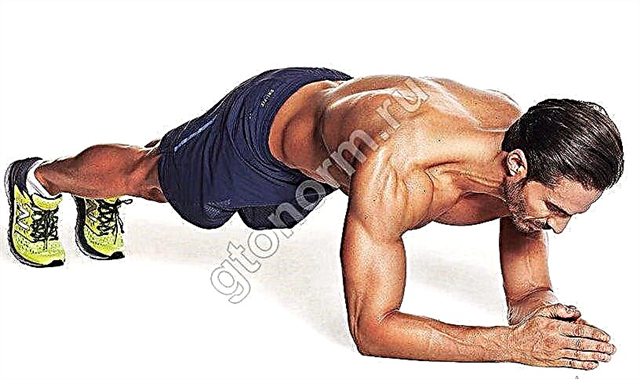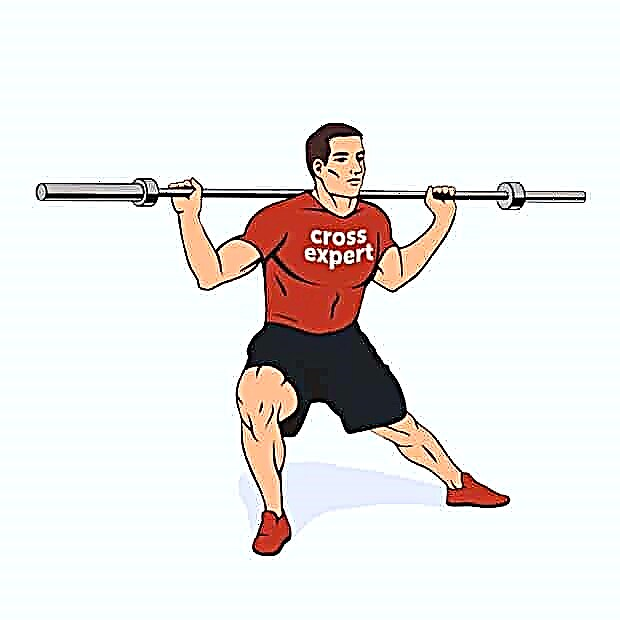Health
6K 0 05.02.2018 (last revision: 11.02.2019)
Running is an essential part of any CrossFit athlete's training program. Jogging is complex in nature and allows you to work out almost the entire lower half of the body, combining the process with cardio load. But at the same time, running is one of the most traumatic exercises. Warming up before running will help reduce trauma. How to warm up properly and should you even warm up before running?
Why do you need a warm-up
Before answering the question whether you need a warm-up before running, consider the effect of running on the body:
- compression load on the spine;
- additional stress on the knee joints;
- increased load on the heart
A proper warm-up will not save you from negative running factors, but will reduce the compression on the spine. Correct stretching will increase the space between the vertebrae, which will reduce the friction factor.
In addition, warm-up of the main muscle groups involved in running will avoid possible injuries:
- Dislocations. Most often they occur due to improper placement of the foot on the ground.
- Sprains. May occur when the running amplitude changes. For example, during the arrival of the "second wind", when the body "includes" additional forces, and it seems to you that you can run much faster.

If you are used to running in the morning, then a warm-up will help to smoothly speed up your heart and avoid unnecessary overload, which can cause irreparable harm to your health.
Warming up will not only save you from injury, but will also improve your results in sprinting (or interval running), which is especially important when performing Wod complexes in which there is a cardio element.
How to warm up?
There are several guidelines for how to warm up properly before running. These tips will help you maintain strength and improve your running performance.
- Warm up from top to bottom - from the neck to the tips of the toes.
- If there are stretching exercises in the complex, they must be performed without jerking and effort. Your task is to pull the muscles, not sit on the twine.
- If the complex contains exercises designed for preliminary fatigue of non-target muscle groups, monitor the pulse.
- Work in the cardio zone for warm-up should not exceed 3-5 minutes.
In fact, there are a lot of exercises to carry out the correct warm-up before running. The table highlights those that are suitable for almost any athlete.
| Exercise | Muscle group | Importance for running |
| Neck rotation
| Neck muscles | Allows you to absorb the load, stimulates blood flow to the head, reduces the risk of dizziness. |
| Body rotation
| Abdominal muscles | Stabilization of the body, reduction of the compressive load on the spine. |
| Body slopes
| Lower back muscles and abs | Slightly stretches the spine, reduces the compression load. |
| Rotation in the pelvic joint
| Thigh muscles | Reduces the likelihood of seizures. Stretches the thigh muscles. |
| Rotation in the knee joint
| Calf + Quadriceps | Increases joint mobility, reduces the risk of gonarthrosis. |
| Minimal body stretch
| Abdominal muscles + thigh muscles | Reduces compression load while running. |
| Stretching the leg muscles (vertical split)
| Hamstrings + thighs + calves + soleus | A great way to increase muscle activity and engage deeper layers while running. Reduces speed. |
| Ankle rotation
| Leg flexor muscles | Reduces the likelihood of dislocations. |
| Jumping out
| Calf + soleus + quadriceps | Preliminary fatigue of the quadriceps allows you to shift the load on the calves while running. |
| Jumping rope at a moderate pace
| Heart muscle | Preparing the heart for the upcoming stress. Allows you to start with less overload and pulse surges. |
For short distances
Short distance runners experience significant overload. In addition, sprint is primarily intended to develop explosive leg strength. Therefore, the complex should include exercises for preliminary fatigue of muscle groups and light cardio, which will reduce the load drops during running. But exercises that compensate for spinal compression can be neglected.

Selection for long distances
If you prefer running races and marathons, you need to prepare your body even more carefully for them than for a short interval run. First of all, pay attention to the knee joints and spine, since during long runs, the compression load will reach its peak. Preliminary fatigue and acceleration of the heart are not recommended, as they will damage the result over a long distance.
Additional recommendations
- When jogging in the morning, it is imperative to do some light exercises beforehand, which will reduce the strain on the heart.
- During winter jogging, pay special attention to warming up all joints, but stretching can be omitted.
- It is better not to use jogging for weight loss. The best option would be to replace it with a bicycle / exercise bike.
- Warm-up for beginners should be more thorough. You may need to repeat the full warm-up circle several times before entering the treadmill.
Outcome
Warming up your legs before running is an important part of your preparation. However, this is not the only preventive measure. If you practice running exercises frequently in your workouts, take care of the health of your spine and knee joints. Aids such as knee wraps and the right running shoes will help with this.
Running shoes are completely different from weightlifting shoes. Running shoes should not only provide solid support, but rather fix the foot in the ankle joint, and most importantly, compensate for the shock load. That is why running shoes are equipped not only with spikes, but also with a springy sole that makes running safer. And most importantly, don't forget your heart rate. Regardless of your goals in sports, a healthy heart is the most important thing.



















